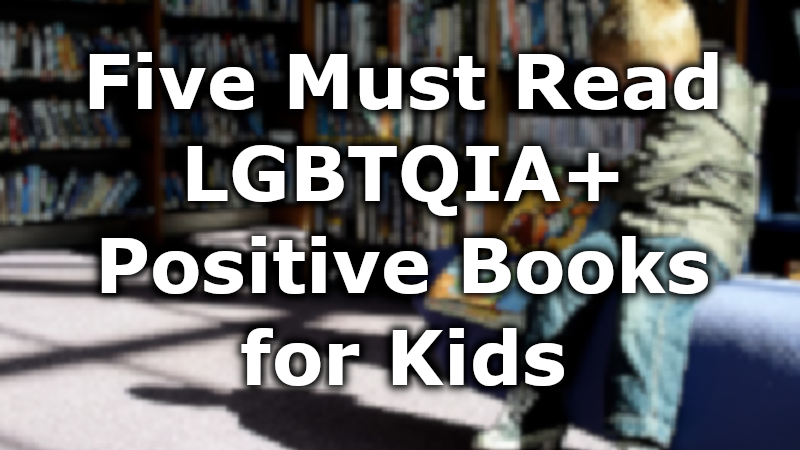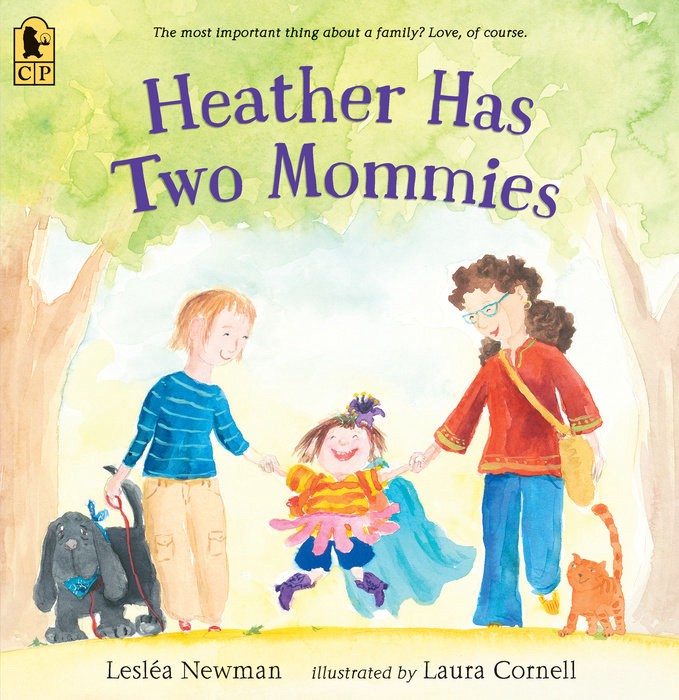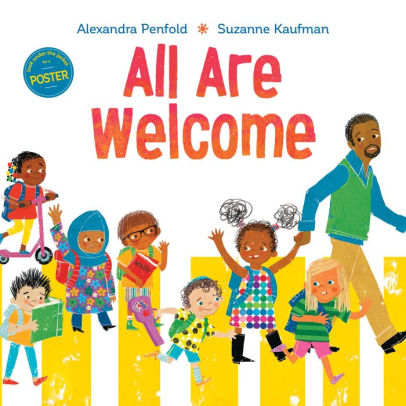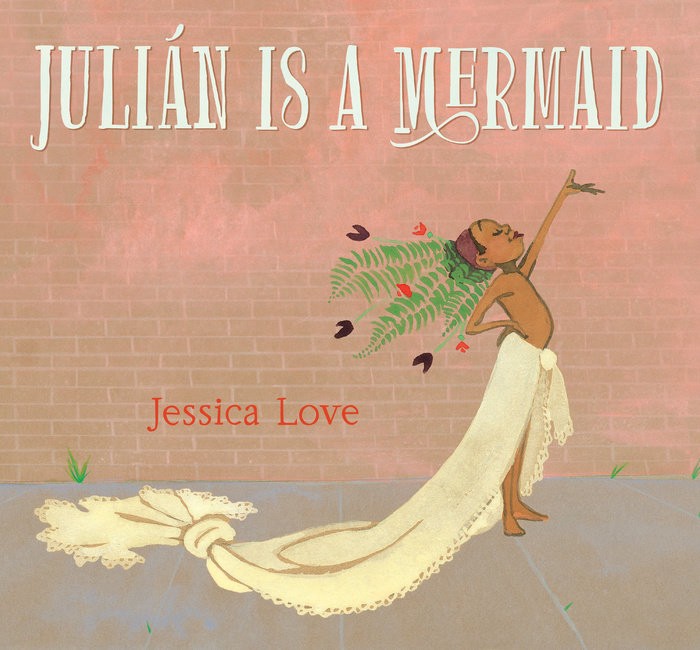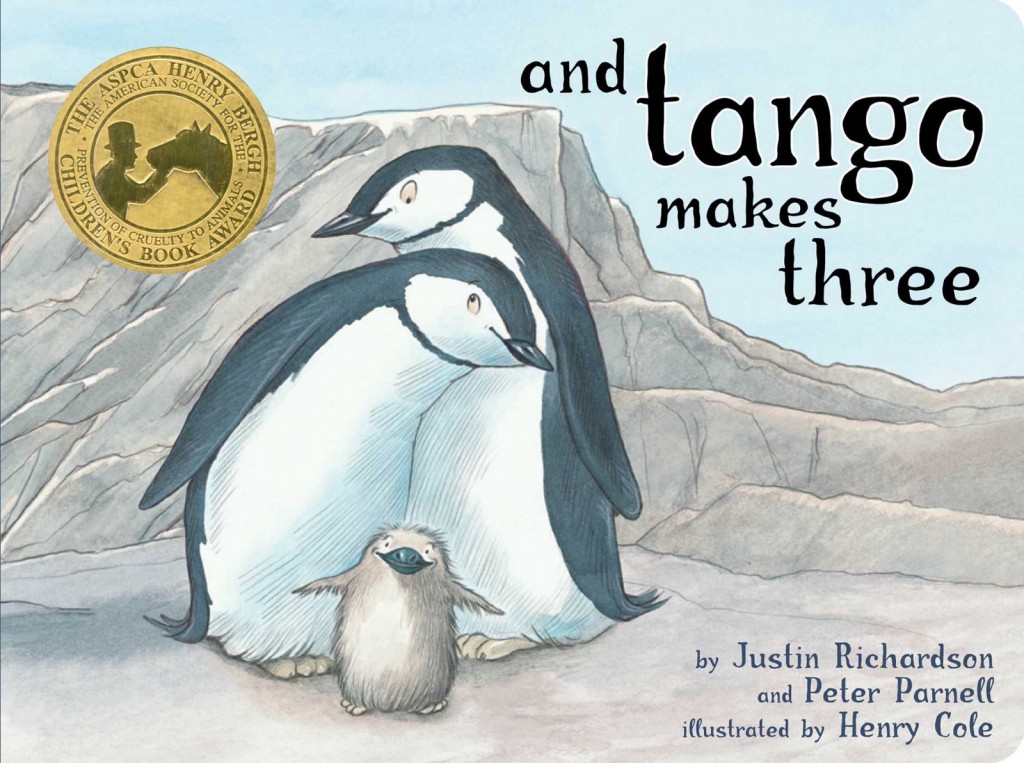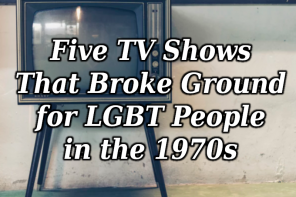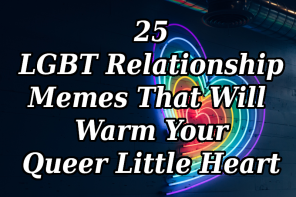Whether you’re looking for something to read to your own kids or children you’re babysitting, a neice or nephew or pother friend or family member, finding a gay and queer positive option can be challenging. That’s why we’ve brought together a honed list of the best books for young kids and young readers when it comes to reflecting the diverse relationships around them.
Heather Has Two Mommies by Lesléa Newman (Illustrations by Diana Souza)
Heather Has Two Mommies, published in 1989, was the first children’s book for the mainstream that featured a same-sex family. The book caused huge controversy and remains one of the most challenged books across many school and local libraries. These days, however, the message it conveys is one we see repeated over and over again in literature and real life: a happy home is about love. Fun Fact: A first edition of this now revered classic can fetch up to $3,000.
Sparkle Boy by Lesléa Newman (Illustrated by Maria Mola)
Another by the author of Heather Has Two Mommies, this book focuses on gender fluidity without forcing labels on it. Casey loves playing with blocks, puzzles and things that sparkle and shimmer. When his older sister gets a sparkly skirt, he wants one two. His family has no problem with indulging him and, in the end, it delivers a message about being yourself and standing up for the right of others to be themselves too.
All Are Welcome Here by Alexandra Penfold and Suzanne Kaufman
This book uses a school class to introduce a wide array of different families and people. It includes everything from families with different cultures and religions to families with disabled members, non-biological siblings or parents and basically anything else you can think of. Its message is simple and powerful: “No matter how you start your day./ What you wear when you play./ Or if you come from far away./ All are welcome here.”
Julián is a Mermaid by Jessica Love
When Julián is riding home on the subway he sees three beautiful women. They have giant, brilliantly colored hair and dresses that end with tails. He is instantly drawn to them and finds them overall fabulous and magical. As soon as he gets home he sets about transforming himself into one of these magical beings and, in the process, teaches a powerful lesson about individuality and self-expression.
And Tango Makes Three by Justin Richardson and Peter Parnell (Illustrated by Henry Cole)
Same sex families aren’t just for people and this book illustrates that point beautifully. It’s the true story of two penguins in the penguin house of the Central Park Zoo. The penguins, Roy and Silo, had been observed by staff going through mating rituals together and even attempting to hatch rocks in place of eggs. The staff decided to give the couple an egg that the biological parents had been unable to hatch. Working together, Roy and Silo hatched the egg and raised the offspring as their own. This book brings that story to life for children proving that love can be found anywhere and everywhere.
Why Are Gay Friendly Books Important?
For children, seeing many different kinds of families confirms the fact that there are all kinds of families and that’s okay. There are kids with two dads, two moms, a mom and a dad, a mom, a dad and two step-parents, kids who are raised by grandparents, kids who are adopted, kids who live with aunts and uncles … just so many families. Seeing families beyond the mom, dad, sibling template goes a long way in acknowledging these other families are an important part of our society. This helps kids from all families feel validated and more a part of society. it also helps those same kids to be more understanding and accepting of families that aren’t a reflection of their own.
Some people try to portray books with a gay friendly message as propaganda and brain washing. But it’s really just about representing people in literature. We all want to find someone with whom we identify when we’re being entertained. Whether it’s a character in a book, on television or in the movies – it means a lot to be able to connect with a character. It can help people identify not only how they see themselves but how the world sees them. Seeing your family portrayed as normal and loving as opposed to controversial or comically campy can have a huge effect on a child’s self-esteem.
At the end of the day, books that reflect gay, queer, non-binary, asexual, blended, foster, extended generations and every other type of family are important because the people in those families are important.

